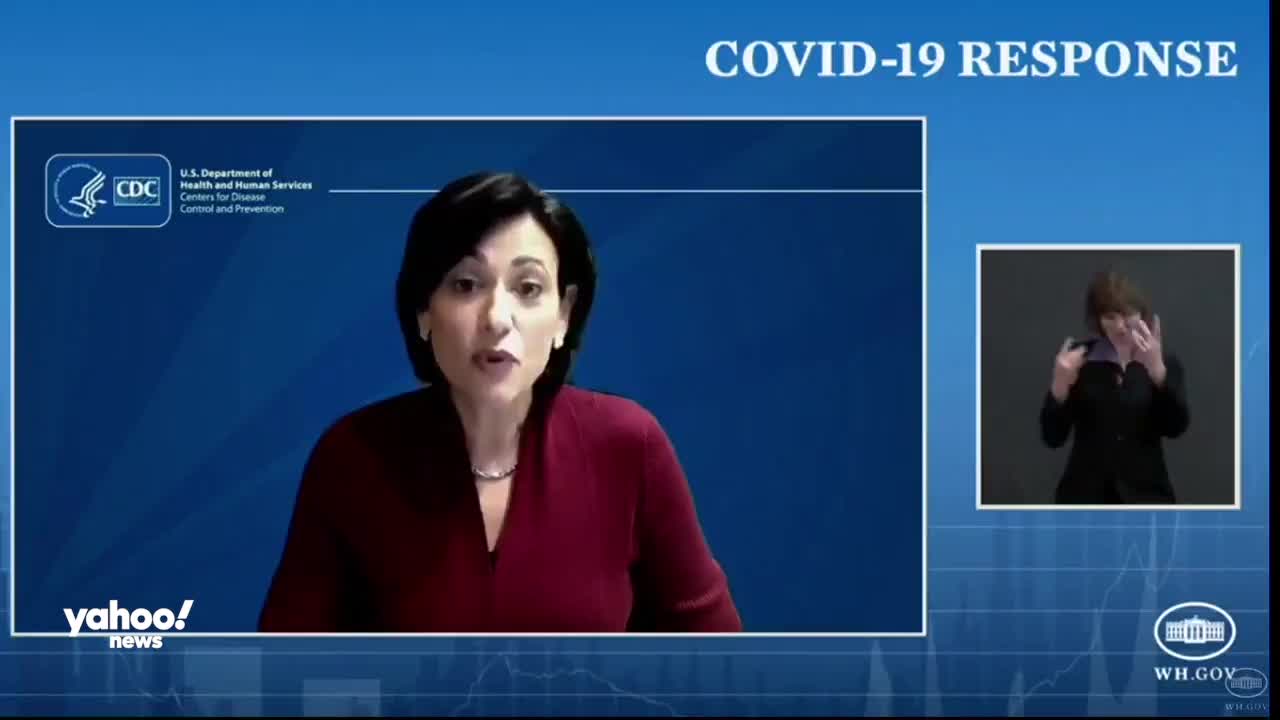New guidelines from the Centers for Disease Control and Prevention say that people fully vaccinated against COVID-19 can safely visit other vaccinated people.
Video transcription
– The CDC is publicizing its initial guidance to the public, which, for the first time, presents some of the activities considered safe for those who are fully vaccinated. When I say fully vaccinated, I mean people who are two weeks after the second dose of Pfizer or Moderna vaccines or two weeks after a single dose of the Johnson & Johnson vaccine.
Before talking about specific recommendations, I want to highlight a few important points. Firstly, robust data from clinical trials demonstrate that current COVID-19 vaccines are highly effective in protecting people vaccinated against serious illness, hospitalization or death from COVID-19. However, there is still a small risk that vaccinated people may be infected with mild or asymptomatic disease and potentially even transmit the virus to others who have not been vaccinated. Understanding the extent of this risk in vaccinated people and the risk of transmitting the virus to others who have not been vaccinated is an area of research in progress.
Second, it is important to note that this is an initial guideline. The science of COVID-19 is complex and our understanding of the virus continues to evolve rapidly. The recommendations issued today are just a first step. As more people are vaccinated and science and evidence expand and as the dynamics of the disease in this country change, we will continue to update this guidance.
It is important to note that our guidance should balance the risk for people who have been fully vaccinated, the risks for those who have not yet received the vaccine and the impact on the transmission of COVID-19 in the broader community with what we all recognize to be the overall benefits. to resume everyday activities and get back to some of the things we love in life. It is in this context and in the current state of the pandemic that we develop these new recommendations.
With today’s initial guidance, it is important to note that we are focusing on activities that fully vaccinated people can resume in private settings, such as their homes, in two scenarios. The first scenario is of people who are fully vaccinated visiting other people who are fully vaccinated. On this slide, these individuals are represented by solid green circles. In this scenario, the CDC recommends that people who are fully vaccinated be able to visit other people who are fully vaccinated in small meetings at home, without wearing masks or physical distance.
Remember here, we are talking about private environments where everyone is vaccinated. So what does that mean? If you and a friend or you and a family member are vaccinated, you can have dinner together, wearing masks, without distancing yourself. You can visit your grandparents if you have been vaccinated and so are they.
Now I want to talk to you about another, more complicated scenario. It involves vaccinated people visiting unvaccinated people. When fully vaccinated people visit unvaccinated people, we have to consider the underlying risks of unvaccinated people and any unvaccinated members of their families. We take this approach because all of our guidance is based on ensuring that we are keeping people safe.
Therefore, the CDC recommends that fully vaccinated people be able to visit unvaccinated people from another home, indoors, without wearing masks or physical distance, as long as unvaccinated people and any unvaccinated members of their family are not at high risk. serious COVID-19 disease. On the slide, people who are vaccinated and at low risk of severe COVID-19 are indicated by solid orange circles. This means that none of the unvaccinated people or any unvaccinated family member, for example, is an adult over 65 or has an underlying condition, such as cancer, heart disease or diabetes that could increase the risk of hospitalization for COVID -19 or death.
Here is an example. If grandparents have been vaccinated, they can visit their daughter and family, even if they have not been vaccinated, as long as the daughter and her family are not at risk of serious illness. They are solid orange circles. Second, if an unvaccinated individual or any unvaccinated family member is at high risk for serious illness, shown here by hollow orange circles, everyone, regardless of vaccination status, must still wear a mask and physical distance and choose if you are outdoors or in a well-ventilated space. This is recommended to keep unvaccinated individuals at high risk safe. Likewise, when fully vaccinated people visit unvaccinated people from multiple families, everyone should wear masks and be physically distant and gather outdoors in a well-ventilated space.
Moving to quarantine, far from visiting. In addition to these new recommendations on visiting in private settings, the new CDC guidance also recommends that fully vaccinated people do not need quarantine or be tested after a known exposure to someone with COVID-19, as long as they are asymptomatic. At the moment, the CDC is not adjusting the current travel guidance. We believe that these new recommendations are an important first step in our efforts to resume daily activities in our communities.
However, we are still in the midst of a serious pandemic. Even so, more than 90% of our population is not fully vaccinated, although we are working hard to get there. Therefore, everyone, whether vaccinated or not, should continue to avoid medium and large meetings, as well as non-essential travel and, when in public spaces, should continue to wear a well-fitting mask, physical distance and follow other public health measures to protect yourself and others.
